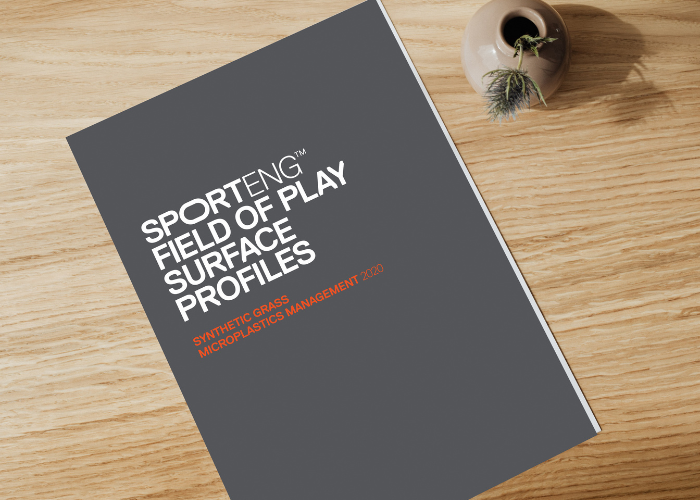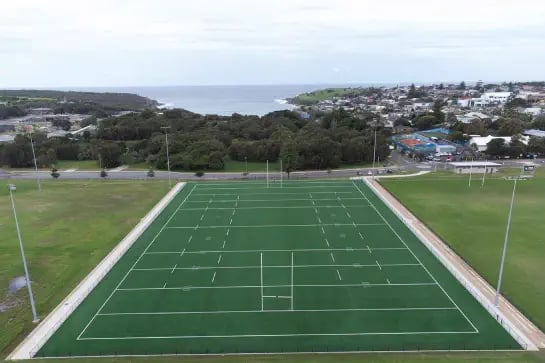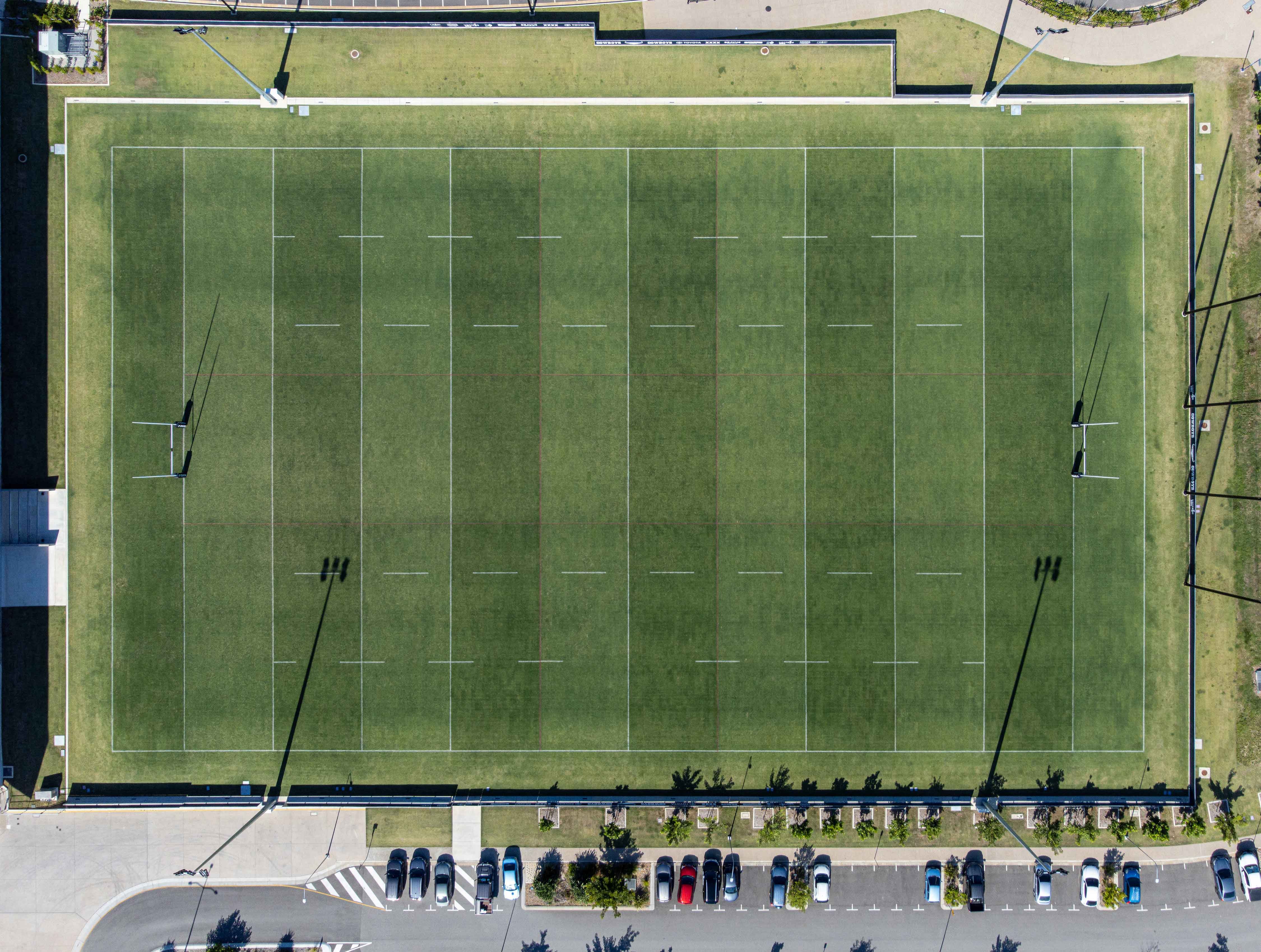SPORTENG specialises in the planning, design and construction phases of Fields of Play across all sports in Australia.
Our experienced team all contribute towards designing high quality fields of play for all levels of use.
Whether it’s rugby union or league, a rugby pitch needs to withstand a high concentration of load applied to the playing surface due to scrums.
.webp?width=1160&height=773&name=Rugby_Overview%20(1).webp)
One of the most critical elements of a rugby pitch is ensuring that the surface doesn’t move underfoot when the players are driving through scrum formations.
Like other natural turf Fields of Play, we combine engineering with agronomy and irrigation design when creating a rugby pitch. We equally represent and integrate these three key elements in the design process, which ensures the pitch is properly designed. These key elements include:
SPORTENG’s in-house design team addresses these three key elements, ensuring the design of your pitch is completed to a high quality while meeting your needs.
The sport governing body has approved the use of natural turf and synthetic grass as a playing surface options to accommodate the needs of international teams.
Our teams have delivered many natural turf and synthetic grass rugby fields across Australia, and have accumulated a vast knowledge and expertise on best practice.
Our technical expertise underpins all our projects, and we are regularly called upon to work on projects of high significance.
No matter if you’re a governing body or a local school, you will benefit from a sports field that puts the athlete first.
We guarantee that SPORTENG’s designs will meet your needs, while complying with the with the Federation Internationale de Football Association (FIFA) and Football Australia standards.
SPORTENG projects run on time and on budget due to our team’s comprehensive 3D design work, exceptional engineering expertise, agronomic and irrigation consultation, along with clear on-site direction.
SPORTENG lives and breathes Fields of Play. We take our love of the game from the grandstand right into our office. We’re proud to be Australia’s leading Field of Play design consultancy.
.webp?width=545&height=409&name=Rugby_DesignApproach%20(1).webp)
Our attention to detail is reflected in our mantra, ‘measure twice, cut once’.
We’re dedicated to achieving the best results for your venue and its athletes, whether it’s a local legend or the next international star.
Whether we design a pitch for an elite venue or a community facility, our approach doesn’t change. We conduct a detailed assessment of the existing site to ensure we:
Once we have a deeper understanding of the site, we brief the client and work with them so we can deliver their desired rugby pitch on time and on budget.
.webp?width=545&height=363&name=Rugby_Sustainability%20(1).webp)
%20(1).webp?width=545&height=412&name=Rugby_Sustainability_2%20(1)%20(1).webp)
Here at SPORTENG, we take a sustainable approach to all our designs. Not happy with just the status quo, we always strive to investigate new designs and construction techniques that deliver positive environmental outcomes.
We believe sustainability is intertwined with sports greatness.
As part of this, we integrate your requirements, from budget to performance values, through to sustainability practices – this ensures we achieve a successful result.
Our sustainability approach for natural turf fields of play considers key design outcomes. These include:
When we design a synthetic grass pitch, we consider and address added environmental elements in the planning and design process. These include:
Optimize your synthetic grass Field of Play.


The SPORTENG team considers the whole-of-life cycle and the use of recycled materials at every stage of design and construction. We make sure that a sustainable end-product starts at the beginning of design.
.webp?width=545&height=363&name=Rugby_ProfileOptions%20(1).webp)
When it comes to selecting the appropriate natural turf profile for a rugby field , there are several options you can consider. Our decisional flow chart can help you marry your hours of use requirements for the pitch with the appropriate playing surface profile.
World Rugby have developed a detailed quality testing system for the use of synthetic grass systems for the development of pitches.


.webp?width=545&height=363&name=Rugby_Engineering_3%20(1).webp)
Both codes of rugby, Union and League, apply high concentrated loads onto the Field of Play surface. Subsequently, for a natural turf field, the profile needs to be stabilised with deep root growth and/or the use of proprietary reinforcement systems. We believe the following key principles are required to ensure this occurs:
The use of synthetic grass can enhance access to the sport, particularly the ease at which small-sided pitches can be readily used on full-sized field without negatively impacting the surface for use by seniors later the same day.
World Rugby mandates the use of synthetic grass systems that can be used for rugby fields. The key design principles differ from that of natural turf (obviously, there is no need for irrigation!) and are:
.webp?width=545&height=363&name=Rugby_Requirements%20(1).webp)
%20(1).webp?width=454&height=343&name=Rugby_Requirements_2%20(1)%20(1).webp)
%20(1).webp?width=545&height=412&name=Rugby_Requirements_3%20(1)%20(1).webp)
World Rugby endorses the use of synthetic grass as the playing surface for rugby pitches. The key design principles for a synthetic grass surface differ from that of natural turf and include:
There are also some differences between rugby union and league pitches, which include different preferred widths, dead-ball zones, run-offs and width of goal posts.
It is important to note that run-offs need to be of the same surface as the playing areas, and all perimeter infrastructure, such as fences and benches, must be outside the run-off offset.
Here at SPORTENG, we pride ourselves on providing clients field designs that consider the operational and end-of-life phases. We make sure all clients are aware of the on-going upkeep requirements and that they have the resources to do so.